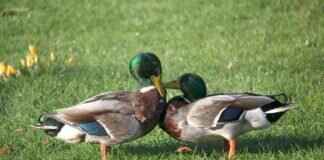This article provides effective methods for removing mouse trap glue, ensuring you can tackle this sticky situation with ease. Learn practical tips and expert insights to simplify the process.
Understanding Mouse Trap Glue
Mouse trap glue is a sticky adhesive used in traps to capture rodents. This type of glue works by immobilizing the mouse upon contact, making it easier to dispose of the pest. However, the same properties that make it effective against mice can also lead to frustrating situations when it adheres to surfaces around your home. Understanding the composition of mouse trap glue can help you select the most effective removal method.
Why Is It Important to Remove Mouse Trap Glue?
Removing mouse trap glue is crucial for maintaining a clean environment. Residual glue can attract dirt and debris, leading to unsanitary conditions. Moreover, lingering glue can pose health hazards, especially if children or pets come into contact with it. Timely removal of glue ensures that your living space remains safe and hygienic.
Common Surfaces Affected by Mouse Trap Glue
Mouse trap glue can affect various surfaces, including:
- Wood
- Tile
- Carpet
- Fabric
Each surface requires a tailored approach for effective glue removal. For instance, glue on wood may require a different technique than glue on fabric, emphasizing the need for a strategic approach.
Materials Needed for Removal
To effectively tackle mouse trap glue, gather the following materials:
- Vegetable oil or mineral oil
- Vinegar
- Baking soda
- Adhesive remover spray
- Paper towels or cloth
Having these items on hand can streamline the removal process and yield better results.
Step-by-Step Guide to Removing Mouse Trap Glue
Follow these steps to effectively remove mouse trap glue:
- Identify the surface affected by the glue.
- Apply a small amount of oil or adhesive remover to the glue.
- Allow it to sit for a few minutes to break down the adhesive.
- Gently scrape the glue with a plastic scraper or cloth.
- Wipe the area clean with a damp cloth.
Removing Glue from Hard Surfaces
For hard surfaces like tile or wood, use oil-based products or commercial adhesive removers. Apply the product, let it sit, and then scrape gently to avoid damaging the surface.
Removing Glue from Fabrics
When dealing with fabrics, test any product on a small inconspicuous area first. Use a combination of vinegar and baking soda for a gentle yet effective removal method. Apply, let sit, and then blot with a clean cloth.
Natural Solutions for Glue Removal
If you prefer eco-friendly options, consider using natural solutions. Items like vegetable oil, vinegar, and baking soda can effectively break down the glue without harsh chemicals.
Using Oil-Based Products
Oil-based products are particularly effective at breaking down the adhesive properties of mouse trap glue. Simply apply the oil, let it penetrate the glue, and then wipe away the residue.
Utilizing Vinegar and Baking Soda
Combining vinegar and baking soda creates a powerful cleaning solution. Mix equal parts of each, apply to the glue, and watch as the mixture bubbles and loosens the adhesive.
Commercial Products for Glue Removal
When natural solutions are insufficient, consider commercial products specifically designed for adhesive removal. These products often contain stronger solvents that can effectively dissolve glue.
Adhesive Remover Sprays
Adhesive remover sprays are readily available and can be highly effective. Choose a product that is safe for the surface you are treating, and follow the manufacturer’s instructions for application.
Goo Gone and Similar Products
Goo Gone is a popular choice for removing sticky residues. It works well on various surfaces, but always test on a small area first to ensure compatibility.
Preventing Future Glue Mishaps
To avoid future glue-related issues, consider the following tips:
- Select the right type of mouse trap for your needs.
- Place traps in areas where they are less likely to cause messes.
By taking proactive measures, you can minimize the likelihood of encountering sticky glue situations in the future.
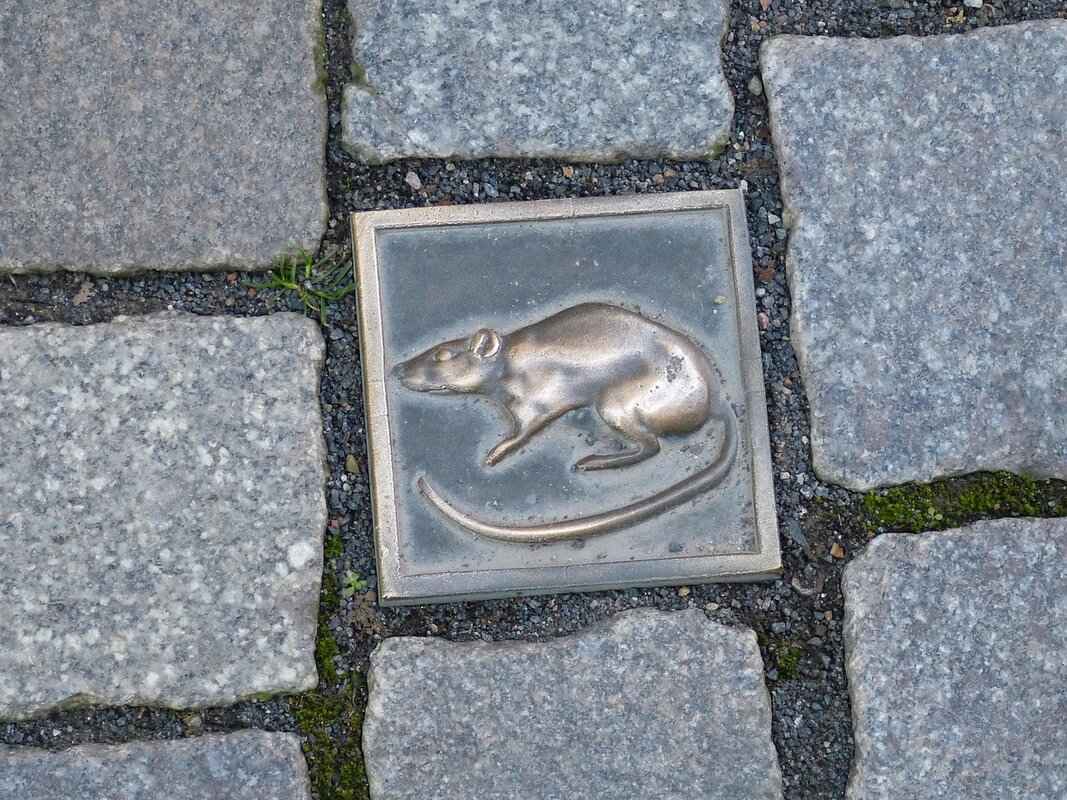
Understanding Mouse Trap Glue
Before we delve into the various methods for removing mouse trap glue, it is crucial to grasp what this adhesive substance is and how it functions. Mouse trap glue, often used in pest control, is a sticky substance designed to capture rodents effectively. It typically has a strong adhesive quality that enables it to hold mice in place once they come into contact with it.
Mouse trap glue operates on a simple principle: when a mouse steps onto the glue board, its paws become stuck, preventing escape. The adhesive is formulated to be both effective and long-lasting, ensuring that it can capture mice over extended periods. However, this same quality that makes it effective at trapping rodents can also lead to frustration when it comes time to remove the glue from surfaces.
Understanding the composition of mouse trap glue is essential for selecting the right removal method. Most glue traps use a combination of natural and synthetic resins, making them quite durable. This durability means that simply peeling the glue off surfaces is often not an option. Instead, a more strategic approach is necessary to avoid damaging the underlying material.
Why is this knowledge important? Knowing how mouse trap glue works can help you avoid common pitfalls during removal. For instance, applying excessive force can lead to tearing or damaging the surface underneath the glue. Furthermore, understanding the glue’s properties can guide you in choosing the right solvents or removal techniques to minimize damage.
In addition, different surfaces may react differently to the glue. For example, wood, tile, and fabric each require specific strategies for effective removal. By being informed about the glue’s characteristics, you can tailor your approach to the specific situation at hand, ensuring a more efficient and less messy process.
In summary, comprehending the nature of mouse trap glue is a vital first step before attempting removal. With this foundational knowledge, you can make informed decisions about the most suitable techniques and products to use, ultimately saving time and effort in addressing this sticky situation.

Why Is It Important to Remove Mouse Trap Glue?
Removing mouse trap glue is not just a matter of aesthetics; it plays a vital role in maintaining a clean and healthy environment. The sticky nature of mouse trap glue can lead to a myriad of problems if not addressed promptly. Below, we delve into the key reasons why timely glue removal is essential.
- Health Hazards: One of the primary reasons for removing mouse trap glue is to prevent potential health risks. The glue can trap not only mice but also other animals, including pets and even children. In some cases, these trapped creatures may suffer injuries or stress, which can lead to further complications. Prolonged exposure to decaying animals can also pose serious health risks from bacteria and odors.
- Hygiene Maintenance: A clean environment is crucial for overall hygiene. Mouse trap glue can collect dust, dirt, and debris, creating a breeding ground for germs and pests. Regularly removing glue ensures that your living space remains sanitary and reduces the likelihood of attracting more rodents or insects.
- Aesthetic Appeal: Glue residue can be unsightly and may damage the surfaces it adheres to. Whether on floors, walls, or furniture, the remnants of mouse trap glue can detract from the overall appearance of your home. By removing it promptly, you maintain the visual integrity of your space.
- Property Damage: Mouse trap glue can cause damage to various surfaces, especially if left for an extended period. Wood, fabric, and even painted surfaces can suffer from discoloration or peeling. Timely removal can minimize the risk of permanent damage, saving you money on repairs or replacements.
- Effective Pest Control: Leaving mouse trap glue in place can hinder effective pest control measures. If traps are not cleared away regularly, they may become less effective over time. Ensuring that traps are clean and functional is crucial for keeping your home rodent-free.
In summary, the importance of removing mouse trap glue cannot be overstated. From health hazards and hygiene maintenance to aesthetic appeal and property protection, timely glue removal is essential for any household. By understanding these implications, homeowners can take proactive measures to ensure a clean and safe living environment.

Common Surfaces Affected by Mouse Trap Glue
Mouse trap glue is a highly effective adhesive used in traps to catch rodents, but it can also create significant challenges when it accidentally adheres to unintended surfaces. Understanding the common surfaces affected by mouse trap glue is crucial for effective removal and to mitigate any potential damage. Here, we will explore these surfaces, the implications of glue residue, and how to handle them.
- Wood Surfaces: Wooden floors and furniture are often at risk when using mouse traps. The glue can seep into the wood grain, making it difficult to remove without damaging the finish. It’s important to act quickly if glue spills onto wood to prevent long-term stains.
- Carpets and Rugs: Carpets pose a significant challenge due to their fibers. Glue can become embedded, making it hard to extract without leaving a residue. If glue is spilled on a carpet, immediate action is essential to minimize the damage.
- Tile and Vinyl Floors: While these surfaces are generally easier to clean, mouse trap glue can still adhere strongly, especially if left for an extended period. The residue can be challenging to remove without the right cleaning agents.
- Fabric Upholstery: Sofas, chairs, and other upholstered furniture can suffer from glue spills. The adhesive can bond with the fabric fibers, leading to potential tearing or discoloration during removal attempts.
- Plastic and Laminate Surfaces: These surfaces can also be affected, and while they are usually more resistant to damage, the glue can leave behind unsightly marks. Care must be taken to avoid scratching the surface while attempting removal.
- Metal Surfaces: Metal surfaces, such as appliances or furniture, can be impacted as well. Although they are less likely to absorb the glue, the residue can still be a nuisance and may require specific solvents for removal.
The implications of glue residue can range from aesthetic concerns to potential damage to surfaces. For instance, glue left on wood can lead to discoloration or warping over time. On carpets, it may result in permanent stains or an unpleasant texture. Understanding these risks can help in taking prompt action to remove the glue effectively.
In summary, mouse trap glue can adhere to a variety of surfaces, each presenting unique challenges during removal. By recognizing the common surfaces affected, individuals can better prepare for potential glue mishaps and take appropriate measures to address them. Whether it’s using the right cleaning agents or employing specific removal techniques, being informed is key to maintaining the integrity of your surfaces while dealing with mouse trap glue.
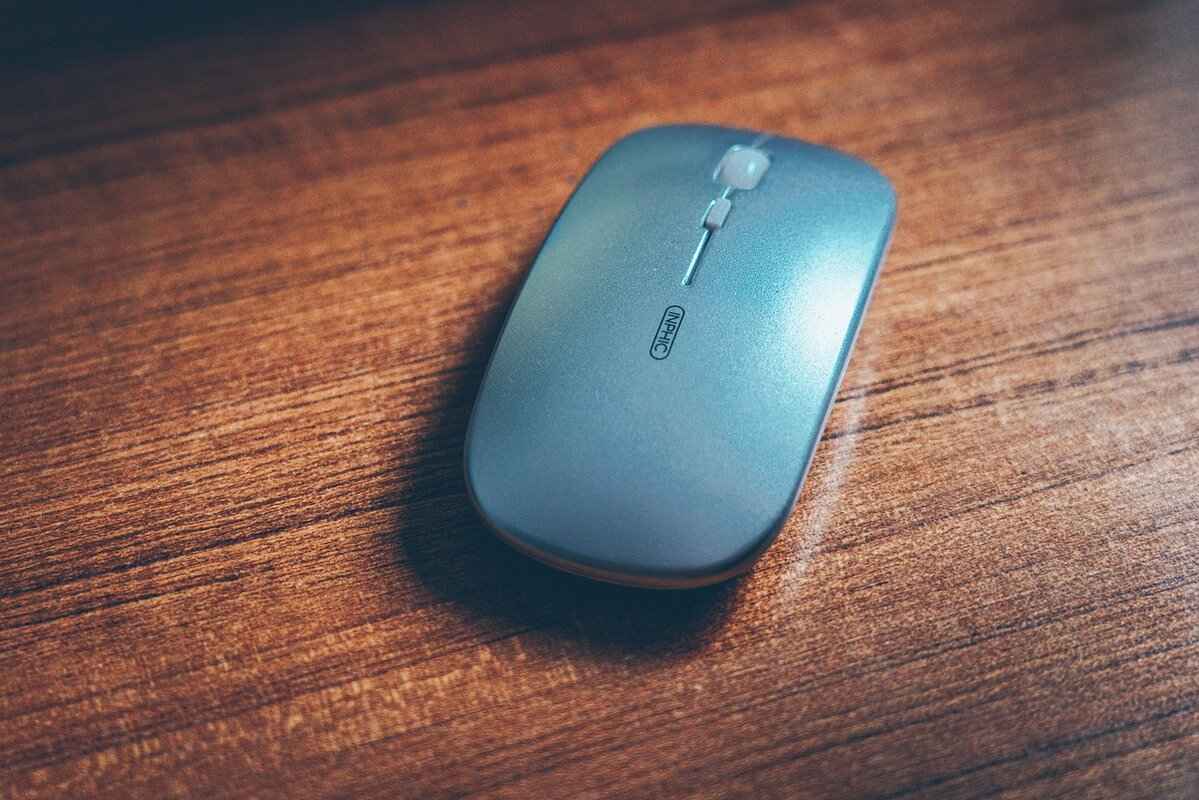
Materials Needed for Removal
When faced with the challenge of removing mouse trap glue, having the right materials at your disposal can significantly streamline the process. This section will detail the essential tools and products you will need to effectively tackle this sticky situation.
1. Solvent-Based Adhesive Removers
One of the most effective solutions for removing mouse trap glue is a solvent-based adhesive remover. These products are specifically formulated to break down adhesives, making them ideal for tackling tough glue residues. Look for removers that are safe for the surfaces you are cleaning. Always follow the manufacturer’s instructions for best results.
2. Oil-Based Products
Oil-based products, such as vegetable oil, olive oil, or even commercial products like baby oil, can also be effective in loosening glue. The oil penetrates the adhesive, helping to lift it away from the surface. Apply a small amount to the affected area and let it sit for a few minutes before attempting to wipe it away.
3. Vinegar and Baking Soda
For those looking for a more natural solution, a mixture of vinegar and baking soda can work wonders. Vinegar acts as a mild acid that helps dissolve the glue, while baking soda provides gentle abrasion to aid in removal. Combine equal parts of vinegar and baking soda to create a paste, apply it to the glue, and let it sit for a few minutes before scrubbing gently.
4. Rubbing Alcohol
Rubbing alcohol is another effective solution for removing mouse trap glue. It can dissolve adhesives and is safe for most surfaces. Apply a small amount to a cloth and dab it on the glue. Allow it to soak for a few moments before wiping it away.
5. Scrapers and Spatulas
Having a scraper or a plastic spatula on hand can be very helpful for gently lifting the glue from surfaces without causing damage. Choose a tool with a flat edge to carefully scrape away the glue once it has been softened by your chosen removal method.
6. Clean Cloths and Paper Towels
Keep a supply of clean cloths or paper towels nearby for wiping away the glue and any cleaning solutions you use. It’s essential to have something absorbent to help remove the residue effectively.
7. Gloves and Protective Gear
When working with strong solvents or oils, it’s wise to wear gloves to protect your hands from irritation. In some cases, using a mask may also be advisable, especially if you are sensitive to chemical odors.
8. Disposal Materials
Once you’ve successfully removed the glue, you’ll want to have a plan for disposing of any waste materials. Use a sealed plastic bag to contain used cloths, paper towels, or any other disposal items to prevent any sticky mess from spreading.
By gathering these essential materials beforehand, you can ensure a smoother and more efficient glue removal process, allowing you to tackle the sticky situation with confidence and ease.

Step-by-Step Guide to Removing Mouse Trap Glue
Removing mouse trap glue can be a daunting task, but with the right approach, it can be accomplished effectively. This guide provides practical steps to ensure you can tackle this sticky problem with ease. Follow these detailed instructions tailored to various surfaces to achieve the best results.
- Assess the Surface: Before you begin, identify the type of surface affected by the glue. Different materials require different removal techniques.
- Gather Your Supplies: Ensure you have the necessary materials on hand. Common items include:
- Vegetable oil or baby oil
- Rubbing alcohol or adhesive remover
- Warm soapy water
- Scraping tool (like a plastic spatula)
- Cloths or paper towels
- Vinegar and baking soda (for natural solutions)
- Test a Small Area: Before applying any solution, test it on a small, inconspicuous area to ensure it won’t damage the surface.
- Apply the Chosen Removal Method: Depending on the surface, apply the appropriate solution:
- For Hard Surfaces: Soak a cloth in rubbing alcohol or an adhesive remover. Place it on the glue for a few minutes to soften it, then gently scrape it away with a plastic spatula.
- For Fabrics: Apply vegetable oil directly to the glue. Allow it to sit for several minutes, then blot with a cloth to lift the glue. Wash the fabric as per care instructions.
- Use Natural Solutions: If you prefer eco-friendly methods, mix equal parts vinegar and baking soda to create a paste. Apply it to the glue, let it sit for about 15 minutes, then scrub gently with a cloth.
- Clean the Area: After the glue is removed, clean the area with warm soapy water to remove any residue from the removal agents.
- Dispose of Materials Properly: Ensure that any used cloths or scraping tools are disposed of safely to prevent further mess.
By following these steps, you can effectively remove mouse trap glue from various surfaces without causing damage. Remember to always prioritize safety and test any products on a small area first. With patience and the right techniques, you’ll have your surfaces clean and glue-free in no time.
Removing Glue from Hard Surfaces
When dealing with mouse trap glue on hard surfaces such as wood or tile, it’s essential to approach the removal process with care to avoid damaging the underlying material. This section provides effective techniques tailored specifically for these surfaces, ensuring a successful cleanup.
First and foremost, it’s important to assess the type of hard surface you’re dealing with. Different materials may react differently to various removal methods. For instance, wood can be sensitive to moisture and harsh chemicals, while tile is generally more resilient. Below are some recommended techniques for glue removal:
- Heat Application: Using a hairdryer or heat gun on a low setting can help soften the glue, making it easier to scrape off. Hold the device a few inches away from the surface and move it back and forth to avoid overheating any one area.
- Scraping: Once the glue has softened, use a plastic scraper or an old credit card to gently lift the glue from the surface. Avoid metal scrapers, as they can scratch and damage the finish.
- Solvent Use: For more stubborn glue, applying a solvent such as rubbing alcohol or a commercial adhesive remover can be effective. Apply a small amount to a cloth and dab it onto the glue, allowing it to sit for a few minutes before scraping. Always test the solvent on a hidden area first to ensure it does not damage the surface.
- Vinegar Solution: For a more natural approach, mix equal parts of white vinegar and water. Apply this solution to the glue and let it sit for a few minutes. The acidity of the vinegar can help break down the adhesive properties.
- Soap and Water: For light glue residue, a simple solution of warm soapy water can work wonders. Use a sponge to scrub the area gently, rinsing with clean water afterward.
After successfully removing the glue, it’s crucial to clean the area thoroughly to remove any residue from the cleaning agents used. Wipe the surface with a damp cloth, followed by a dry cloth to prevent moisture damage, especially on wood surfaces.
Lastly, always remember to wear gloves and ensure proper ventilation when using any chemical solvents. This will help protect your skin and lungs from harmful substances. By following these tailored techniques, you can effectively remove mouse trap glue from hard surfaces without causing damage.
Removing Glue from Fabrics
Dealing with glue on fabrics can be a frustrating experience, especially if you’re concerned about damaging your favorite textiles. Understanding the best methods for is essential for preserving their integrity while effectively eliminating the sticky residue. Here, we outline practical strategies and tips to help you safely tackle this challenge.
First and foremost, it’s important to identify the type of fabric you are working with. Different fabrics react differently to various removal methods. For instance, delicate fabrics like silk or chiffon require gentler approaches, while sturdier materials like cotton or polyester can withstand more aggressive techniques.
- Test Before You Proceed: Always perform a spot test on a hidden area of the fabric. This will help you determine how the fabric reacts to the removal method without risking visible damage.
- Use Ice for Hardening Glue: If the glue is still fresh, place ice cubes in a plastic bag and apply it to the glue. This can harden the glue, making it easier to scrape off gently with a dull knife or credit card.
- Apply Oil-Based Solutions: For dried glue, consider using an oil-based product like baby oil or olive oil. Apply a small amount to the glue and let it sit for a few minutes to break down the adhesive. Then, gently scrape away the softened glue.
Another effective method involves using vinegar. Soak a cloth in white vinegar and dab it onto the glue. Allow it to sit for a few minutes before gently rubbing the area with a soft cloth. Vinegar is not only effective but also a natural solution that is less likely to harm the fabric.
For stubborn glue, you can make a paste using baking soda and water. Apply the paste to the glue and let it sit for about 15 minutes. The abrasiveness of the baking soda can help lift the glue without damaging the fabric. Afterward, rinse the area with cold water and blot dry.
In some cases, you might need to resort to commercial adhesive removers. However, it’s crucial to choose a product that is safe for fabrics. Always read the label and follow the manufacturer’s instructions carefully. Apply the product to a cloth rather than directly onto the fabric to control the amount used and prevent oversaturation.
After successfully removing the glue, wash the fabric according to its care instructions. This step will help eliminate any residual adhesive or cleaning product, ensuring your fabric is clean and safe for use.
Finally, remember that prevention is key. When using glue near fabrics, consider using protective barriers like old newspapers or plastic sheets to avoid accidental spills. By taking these precautions and employing the right techniques, you can effectively manage glue mishaps on fabrics without compromising their quality.
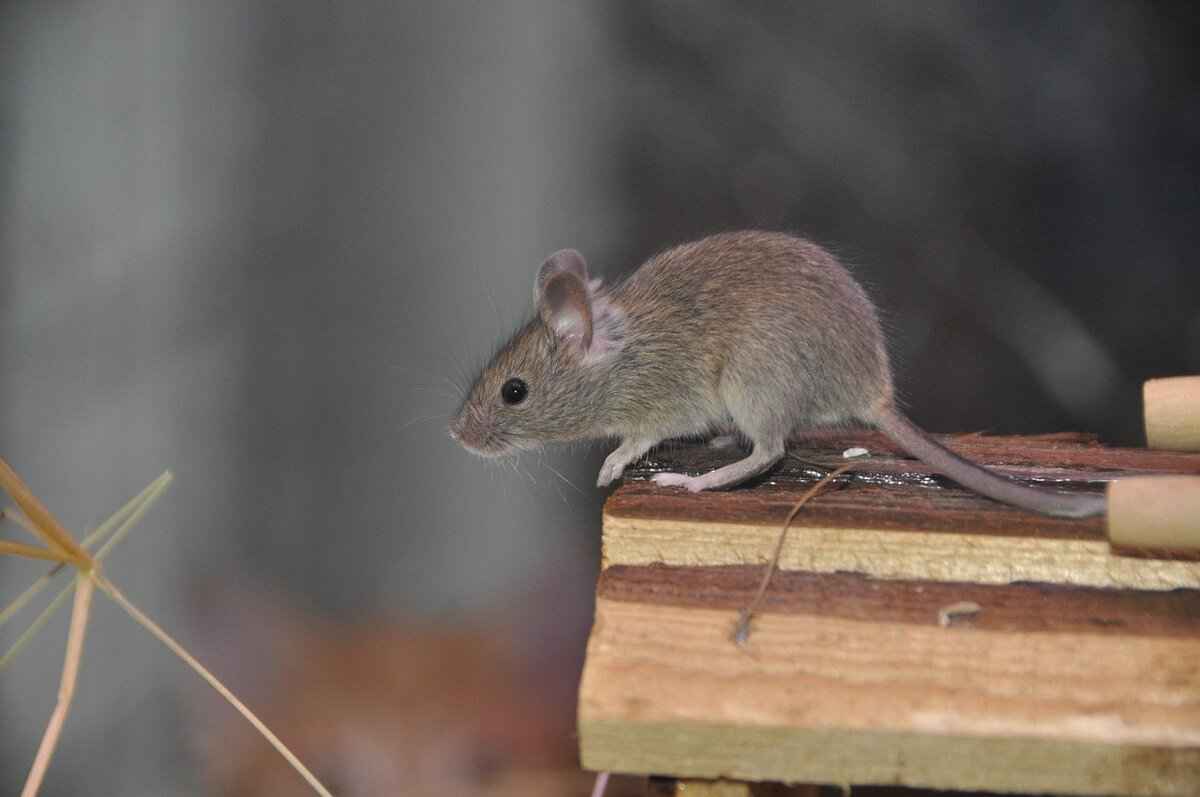
Natural Solutions for Glue Removal
For those looking to adopt more eco-friendly practices, natural solutions can be remarkably effective in removing mouse trap glue. These alternatives not only help in tackling sticky situations but also contribute to a healthier environment. Below, we explore various household items that can aid in the removal process, ensuring that you can clean up without resorting to harsh chemicals.
- Vegetable Oil: One of the most accessible solutions is vegetable oil. Oils like canola or olive oil can break down the adhesive properties of the glue. To use this method, simply apply a small amount of oil to a cloth and gently rub the affected area. Allow the oil to sit for a few minutes to penetrate the glue, then wipe it away with a clean cloth.
- Peanut Butter: Surprisingly, peanut butter can also work wonders on mouse trap glue. Its natural oils help dissolve the adhesive. Spread a thin layer of peanut butter over the glue, let it sit for about 10-15 minutes, and then wipe it off with a cloth. This method is particularly effective on surfaces like wood and tile.
- White Vinegar: Another household staple, white vinegar, is a powerful cleaner. Mix equal parts of vinegar and water, then apply the solution to the glue. The acidity in the vinegar helps break down the adhesive. After a few minutes, scrub the area gently with a sponge, and rinse with warm water.
- Baking Soda Paste: Baking soda is not just for baking; it can also help with glue removal. Create a paste by mixing baking soda with water, apply it to the glue, and let it sit for about 15 minutes. The abrasive nature of baking soda helps lift the glue when scrubbed gently.
- Essential Oils: Certain essential oils, such as tea tree or eucalyptus, can be effective in breaking down adhesives. Mix a few drops with a carrier oil and apply to the glue. The pleasant scent is an added bonus, making the cleaning process more enjoyable.
Using these natural solutions not only helps in effectively removing mouse trap glue but also ensures that you are minimizing your environmental impact. Each method is straightforward and utilizes items you likely already have in your home, making them practical choices for anyone seeking a green cleaning alternative.
When attempting to remove mouse trap glue, always test these natural solutions on a small, inconspicuous area first to ensure they do not damage the surface. With a little patience and the right approach, you can tackle glue removal effectively while keeping your home eco-friendly.
Using Oil-Based Products
When it comes to removing mouse trap glue, oil-based products can be a game changer. These products are particularly effective because they work to break down the adhesive properties of the glue, making it easier to remove from various surfaces.
Why Choose Oil-Based Products? The reason oil-based products excel in this task is due to their chemical composition. Oils can penetrate the glue’s structure, weakening its bond to the surface. This is especially useful for removing glue from hard surfaces, fabrics, and even skin without causing damage.
Types of Oil-Based Products
- Vegetable Oils: Common kitchen oils like olive oil or canola oil can be surprisingly effective. They are safe to use on most surfaces and are eco-friendly.
- Mineral Oil: This is a more specialized oil that can be found in pharmacies. It’s particularly good for delicate surfaces.
- Commercial Oil-Based Adhesive Removers: Products specifically designed for adhesive removal often contain a blend of oils and solvents that work quickly.
How to Use Oil-Based Products for Glue Removal
- Preparation: Start by ensuring the area is well-ventilated. Gather your oil-based product, a clean cloth, and any necessary tools.
- Application: Apply a generous amount of the oil directly onto the glue. If using a cloth, soak it in the oil and press it against the glue for a few minutes.
- Let it Soak: Allow the oil to sit on the glue for 5-10 minutes. This soaking time is crucial as it allows the oil to penetrate and break down the adhesive.
- Wipe Away: Use a clean cloth to gently wipe away the glue. You may need to apply more oil and repeat this step if the glue doesn’t come off easily.
- Clean the Surface: After the glue is removed, clean the area with warm, soapy water to remove any oily residue.
Safety Tips
- Always test the oil on a small, inconspicuous area first to ensure it does not damage the surface.
- Keep oil-based products away from heat sources, as they can be flammable.
In conclusion, using oil-based products is a practical and effective method for removing mouse trap glue. With the right approach and materials, you can tackle even the stickiest situations with ease.
Utilizing Vinegar and Baking Soda
When it comes to removing mouse trap glue, vinegar and baking soda stand out as two of the most effective and eco-friendly household items available. Combining these ingredients creates a potent cleaning solution that can tackle stubborn adhesives without the need for harsh chemicals. This section will guide you through the process of using vinegar and baking soda for glue removal, ensuring a clean and safe environment.
First, let’s understand the properties of these ingredients:
- Vinegar: Acetic acid in vinegar acts as a natural solvent, breaking down sticky substances.
- Baking Soda: This alkaline compound not only helps in scrubbing but also neutralizes odors, making it an excellent addition to your cleaning arsenal.
To create a powerful cleaning solution, follow these simple steps:
- Gather Your Materials: You will need white vinegar, baking soda, a small bowl, a sponge or cloth, and a plastic scraper (optional).
- Mix the Solution: In a small bowl, combine equal parts of vinegar and baking soda. Expect a fizzing reaction as the two ingredients interact. This reaction helps to lift the glue from surfaces.
- Apply the Mixture: Once the fizzing subsides, apply the mixture directly onto the glue residue. Use a sponge or cloth to gently rub the area.
- Let it Sit: Allow the solution to sit for about 10-15 minutes. This waiting period gives the vinegar time to break down the adhesive.
- Scrape Off the Glue: After the waiting period, use a plastic scraper to gently lift the glue away from the surface. Be careful not to damage the underlying material.
- Rinse the Area: Finally, rinse the area with warm water and wipe it clean with a dry cloth to remove any remaining residue.
This method is particularly effective on hard surfaces such as tiles, countertops, and wooden furniture. However, always perform a spot test on a small, inconspicuous area first to ensure that the vinegar does not damage the finish of the material.
In addition to being effective, using vinegar and baking soda is also a cost-efficient solution. Both ingredients are readily available in most households, making this method accessible for everyone. Furthermore, this natural approach minimizes the risk of exposure to harmful chemicals, making it a safe choice for households with children and pets.
In summary, utilizing vinegar and baking soda for glue removal is not only effective but also environmentally friendly. By following the simple steps outlined above, you can tackle mouse trap glue with ease, ensuring a clean and safe living space.

Commercial Products for Glue Removal
When natural solutions fall short, commercial products can provide an efficient alternative for removing mouse trap glue and other sticky residues. This section reviews popular products designed specifically for this purpose, ensuring you have the best tools at your disposal to tackle stubborn adhesives.
- Adhesive Remover Sprays: Adhesive remover sprays are among the most widely available solutions for removing glue. These products are formulated to break down the adhesive properties of various glues, making them easier to wipe away. When choosing a spray, look for one that is safe for the surface you are treating. Always follow the manufacturer’s instructions for application to achieve the best results.
- Goo Gone and Similar Products: Goo Gone is a popular choice among consumers for its effectiveness in tackling sticky residues. It is particularly useful for removing glue from a variety of surfaces, including wood, plastic, and fabric. To use Goo Gone, apply a small amount to the affected area and let it sit for a few minutes to penetrate the glue. Then, wipe away the residue with a clean cloth. Ensure to test it on an inconspicuous area first to avoid any potential damage.
- Solvent-Based Removers: For tougher glue residues, solvent-based removers can be particularly effective. These products often contain powerful solvents that can dissolve adhesives quickly. However, they may not be suitable for all surfaces, so it’s crucial to read the labels carefully. Use them in well-ventilated areas and with appropriate protective gear, such as gloves and masks, to ensure safety.
- Natural Enzyme Cleaners: Some commercial products harness the power of natural enzymes to break down sticky residues. These cleaners are often marketed as eco-friendly alternatives and can be effective for glue removal without harsh chemicals. They are particularly beneficial for those who are sensitive to strong odors or chemicals.
How to Use Commercial Products Effectively
To maximize the effectiveness of these commercial products, follow these general steps:
- Preparation: Before applying any product, prepare the area by removing any loose debris or dirt. This will ensure that the product can work directly on the glue.
- Application: Apply the product according to the instructions provided. For sprays, hold the can at the recommended distance and spray evenly over the glue.
- Wait Time: Allow the product to sit for the recommended period. This waiting time is crucial as it gives the ingredients time to penetrate and break down the glue.
- Removal: After the waiting period, use a clean cloth or scraper to remove the glue. Be gentle to avoid damaging the underlying surface.
- Rinse and Clean: After removing the glue, rinse the area with water if applicable, and clean with a mild detergent to remove any residue from the commercial product.
In conclusion, when faced with the challenge of removing mouse trap glue, commercial products can serve as a reliable solution. By understanding the various options available and how to use them effectively, you can achieve a clean and residue-free surface with minimal effort.
Adhesive Remover Sprays
Adhesive remover sprays are a popular solution for tackling sticky residues left by various adhesives, including mouse trap glue. These products are designed to dissolve and lift adhesives from surfaces, making them an essential tool for anyone dealing with stubborn glue. In this section, we will explore how to choose a suitable adhesive remover spray and the best practices for its application to achieve optimal results.
When selecting an adhesive remover spray, it is important to consider several factors to ensure you pick a product that is effective and safe for your specific needs. Here are some key points to keep in mind:
- Type of Adhesive: Different adhesives may require different formulations. Ensure the remover you choose is compatible with the type of glue you are dealing with.
- Surface Compatibility: Check if the spray is safe to use on the surface you are treating. Some products may damage delicate materials.
- Ingredients: Look for products with non-toxic or eco-friendly ingredients if you are concerned about chemicals.
- Application Method: Some sprays come with specific applicators or nozzles for targeted application, which can enhance ease of use.
- Customer Reviews: Reading reviews can provide insights into the effectiveness and reliability of the product.
To maximize the effectiveness of adhesive remover sprays, follow these practical application tips:
- Prepare the Area: Ensure the workspace is well-ventilated and free from clutter. This not only enhances safety but also allows for easier cleaning.
- Test First: Always perform a patch test on a small, inconspicuous area to check for any adverse reactions on the surface.
- Apply Generously: Spray the adhesive remover liberally over the affected area. Allow it to sit for the recommended time as indicated on the product label. This waiting period allows the solution to penetrate and break down the adhesive.
- Scrape Gently: Use a plastic scraper or a soft cloth to gently lift the adhesive residue. Avoid using metal tools that could scratch or damage the surface.
- Clean Up: Once the adhesive is removed, clean the area with warm soapy water to eliminate any remaining residue from the remover spray.
While adhesive remover sprays can be highly effective, it is crucial to use them safely. Here are some safety tips to keep in mind:
- Wear Protective Gear: Use gloves and goggles to protect your skin and eyes from any splashes or fumes.
- Avoid Inhalation: If the spray has a strong odor, consider wearing a mask or respirator to avoid inhaling fumes.
- Keep Away from Flames: Many adhesive removers are flammable. Ensure you are working away from open flames or heat sources.
By understanding how to choose and apply adhesive remover sprays effectively, you can tackle sticky situations with confidence. Whether you’re dealing with mouse trap glue or other adhesive residues, these sprays offer a convenient and efficient solution for maintaining a clean environment.
Goo Gone and Similar Products
Goo Gone is a widely recognized product designed specifically for tackling sticky residues, making it a go-to solution for many households. This section delves into its effectiveness, proper usage, and safety precautions when applying it on various surfaces.
Goo Gone works by breaking down the adhesive properties of sticky substances, allowing for easier removal. The product contains a blend of natural citrus terpenes and other ingredients that effectively dissolve adhesives without damaging most surfaces. Whether you’re dealing with glue from labels, stickers, or even mouse trap glue, Goo Gone can be an effective ally.
How to Use Goo Gone Safely
When using Goo Gone, it’s essential to follow a few safety guidelines to ensure optimal results and protect your surfaces:
- Test a small area first: Before applying Goo Gone to a large surface, test it on a small, inconspicuous area to check for any adverse reactions.
- Avoid sensitive surfaces: While Goo Gone is safe for many materials, it can damage certain finishes, such as those on unsealed wood or some plastics. Always read the label for specific guidelines.
- Ventilation is key: Ensure that the area is well-ventilated during application to avoid inhaling fumes.
Application Process
To effectively use Goo Gone, follow these steps:
- Apply the product: Squirt a small amount of Goo Gone directly onto the sticky residue.
- Let it sit: Allow the product to sit for a few minutes to penetrate the adhesive.
- Wipe away: Use a clean cloth or paper towel to wipe away the residue. You may need to repeat the process for stubborn spots.
- Clean the area: After removing the glue, wash the surface with soap and water to eliminate any remaining Goo Gone residue.
Other Commercial Products
In addition to Goo Gone, there are several other commercial products that can effectively remove sticky residues. Products like 3M Adhesive Remover and WD-40 Multi-Use Product are also popular choices. Each product has its unique formulation and application method, so it’s essential to read the instructions carefully.
When choosing a product, consider the type of surface you’ll be working on and the nature of the adhesive. Some products are specifically designed for delicate surfaces, while others are more robust and suitable for heavy-duty applications.
Conclusion
Goo Gone and similar products offer effective solutions for removing sticky residues, including mouse trap glue. By following the proper application techniques and safety precautions, you can ensure a successful cleaning experience. Always remember to test on a small area first and choose a product that is compatible with your surface type for the best results.
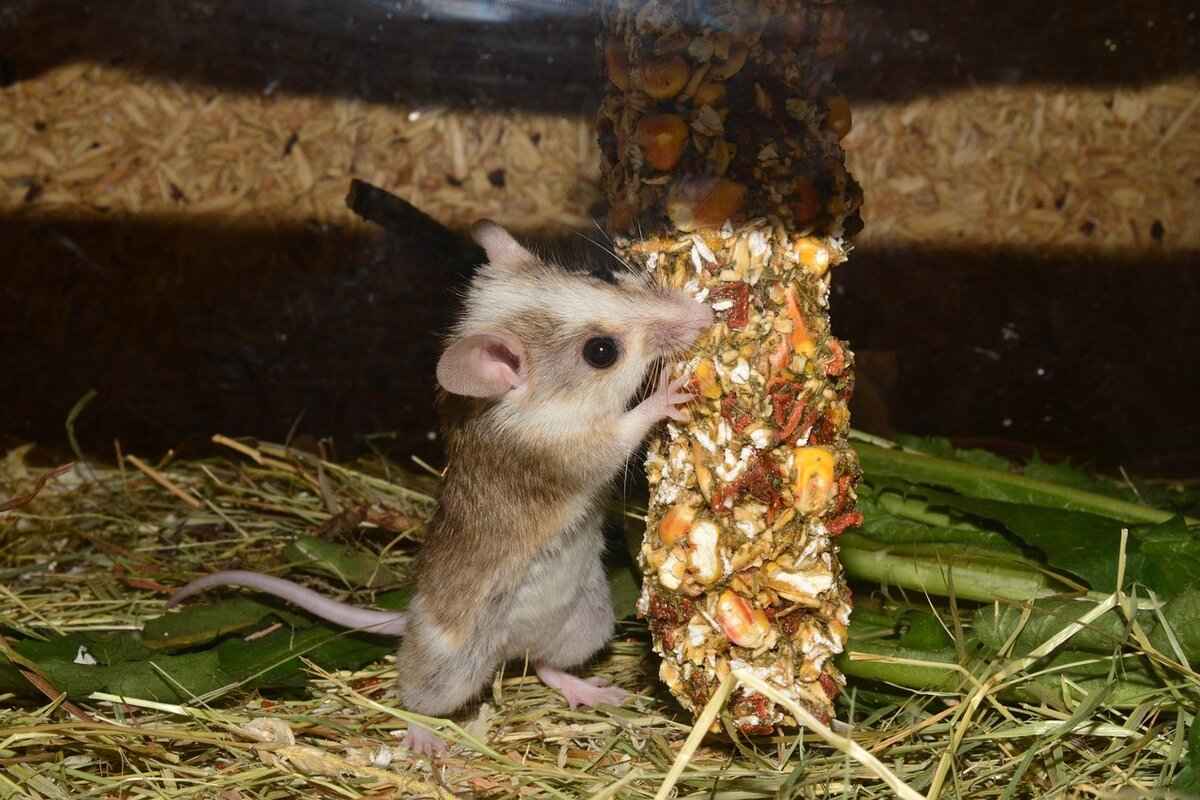
Preventing Future Glue Mishaps
Taking proactive measures can significantly reduce the likelihood of encountering glue-related issues with mouse traps in the future. By implementing a few practical strategies, you can avoid sticky situations and ensure a cleaner, safer environment. Here are some effective tips to consider:
- Choosing the Right Type of Trap: Selecting the appropriate mouse trap is crucial. There are various types available, including snap traps, electronic traps, and glue traps. Each has its own advantages and disadvantages. For instance, if you prefer a more humane approach, consider using catch-and-release traps instead of glue traps. This not only prevents glue-related messes but also allows for the safe relocation of mice.
- Proper Trap Placement: Where you place your traps can greatly affect their effectiveness and minimize glue spills. Identify areas with high mouse activity, such as along walls or near food sources. Ensure that traps are placed flat against surfaces to avoid accidental tipping. This strategic placement reduces the chances of glue traps being disturbed and causing a mess.
- Regular Monitoring: Frequently check your traps to ensure they are functioning correctly. Regular monitoring allows you to address any issues promptly, preventing glue from drying out or becoming ineffective. It also helps you remove any trapped mice or debris before it creates a larger mess.
- Using Trap Covers: Consider using trap covers or boxes designed to contain glue traps. These covers not only keep the traps discreet but also protect them from dust and debris that could interfere with their effectiveness. Additionally, they prevent accidental contact with the glue, making cleanup easier.
- Educating Household Members: Ensure that everyone in your home understands the proper use and placement of mouse traps. Educating family members about the importance of keeping traps in designated areas can significantly reduce the risk of accidental spills or misplacement.
- Storing Traps Properly: When not in use, store traps in a clean, dry place, away from direct sunlight. This prevents the glue from degrading and ensures that traps remain effective when needed. Keeping them organized in a dedicated storage container can also help you avoid misplacing them.
By implementing these practical tips, you can significantly reduce the chances of encountering glue-related issues in the future. Taking proactive steps not only keeps your environment cleaner but also contributes to a more humane approach to pest control. Remember, prevention is always better than dealing with the aftermath of a sticky situation.
Choosing the Right Type of Trap
When it comes to managing a mouse problem, selecting the appropriate trap is a critical first step. The right choice can significantly reduce the chances of glue mishaps and enhance the effectiveness of your pest control efforts. Here, we will explore the various types of traps available and their respective advantages.
- Glue Traps: These traps are designed to capture mice by using a sticky adhesive. They are simple to use and do not require baiting, making them a popular choice for many homeowners. However, they can sometimes lead to unintended captures, such as non-target animals.
- Snap Traps: Snap traps are mechanical devices that kill mice instantly upon contact. They are highly effective and can be reused multiple times, making them a cost-efficient option. Proper placement is crucial for maximizing their effectiveness.
- Live Traps: For those who prefer a humane approach, live traps capture mice without harming them. Once caught, the mice can be released far away from your home. It’s essential to check these traps frequently to ensure the captured mice do not suffer from stress or starvation.
- Electronic Traps: These modern traps use a high-voltage shock to kill mice instantly. They are easy to set up, clean, and can be reused. Many electronic traps come with indicators that show when a mouse has been caught, adding convenience to the process.
Advantages of Each Trap Type
Each type of trap has its unique benefits. Glue traps are often the easiest to set up and require no bait, making them ideal for quick fixes. Snap traps, on the other hand, are known for their effectiveness and quick results. Live traps appeal to those who wish to avoid killing mice, while electronic traps offer a high-tech solution that minimizes the mess associated with traditional traps.
Considerations When Choosing a Trap
When selecting a trap, consider the following factors:
- Location: Where you place the trap can influence its effectiveness. Traps should be placed along walls or in areas where you notice mouse activity.
- Type of Mouse: Different traps may be more effective depending on the species of mouse you are dealing with. For example, smaller traps may be necessary for house mice, while larger traps may be needed for field mice.
- Safety: If you have pets or children, consider traps that minimize the risk of accidental contact. Live traps and glue traps are generally safer options in such environments.
In conclusion, choosing the right type of trap is essential for effective mouse control while minimizing glue mishaps. By understanding the various options available and their respective advantages, you can make an informed decision that best suits your needs.
Proper Trap Placement
When it comes to managing mouse infestations, the **correct placement of traps** is essential for maximizing their effectiveness while minimizing the risk of glue spills. Understanding the best locations to set traps can significantly enhance your pest control efforts, ensuring that you catch mice efficiently without creating a mess.
- Identify High-Traffic Areas: Mice are creatures of habit and tend to travel along established paths. Look for signs of mouse activity, such as droppings or gnaw marks, to determine their most frequented routes. Common areas include along walls, behind appliances, and in dark corners.
- Utilize Baiting Techniques: To attract mice effectively, consider using bait that appeals to their senses. Place traps near food sources, such as pantries or garbage areas. Ensure the bait is securely attached to the trap to avoid any spills that could lead to glue mishaps.
- Avoid Clutter: Cluttered spaces can obstruct the effectiveness of traps. Clear away unnecessary items and debris from potential trap locations to ensure that mice have a clear path to the traps. This not only increases the chances of a catch but also reduces the likelihood of glue spills.
- Height Matters: Mice are agile climbers. Consider placing traps on elevated surfaces, such as shelves or countertops, especially if you notice signs of mice in those areas. However, always ensure that the traps are stable and secure to prevent accidental tipping and glue spills.
- Strategic Corner Placement: Corners are ideal spots for trap placement. Mice often feel safer moving along walls, so setting traps in corners can increase the chances of a successful catch. Ensure that the traps are positioned flush against the wall to prevent mice from bypassing them.
- Monitor and Adjust: After setting traps, regularly monitor their effectiveness. If you notice that traps remain untouched, consider relocating them to different areas based on observed mouse activity. This adaptability can help in achieving better results and reducing the chances of glue mishaps.
In conclusion, the **proper placement of traps** is crucial for effective pest management. By identifying high-traffic areas, utilizing baiting techniques, avoiding clutter, considering height, strategically placing traps in corners, and monitoring their effectiveness, you can significantly reduce the likelihood of glue spills. These proactive steps ensure a cleaner and more efficient approach to dealing with mouse infestations, making your pest control efforts more successful.
Frequently Asked Questions
- What is mouse trap glue made of?
Mouse trap glue typically consists of a sticky adhesive that is designed to capture rodents. It’s formulated to remain tacky for an extended period, ensuring that any mouse that comes into contact with it gets stuck.
- How can I safely remove mouse trap glue from my skin?
If you accidentally get mouse trap glue on your skin, try using vegetable oil or baby oil. Apply a small amount to the affected area and gently rub until the glue loosens, then wash with soap and water.
- Can I use vinegar to remove mouse trap glue from surfaces?
Yes! Vinegar can be an effective natural solution for removing mouse trap glue. Just soak a cloth in vinegar, apply it to the glue, and let it sit for a few minutes before wiping it away.
- Are there any commercial products specifically for removing mouse trap glue?
Absolutely! Products like Goo Gone and adhesive remover sprays are designed to tackle sticky residues, including mouse trap glue. Always follow the manufacturer’s instructions for the best results.
- How can I prevent glue mishaps in the future?
To avoid future glue issues, choose the right type of trap and place it strategically. Ensure traps are positioned away from high-traffic areas and check them regularly to minimize the risk of spills.












